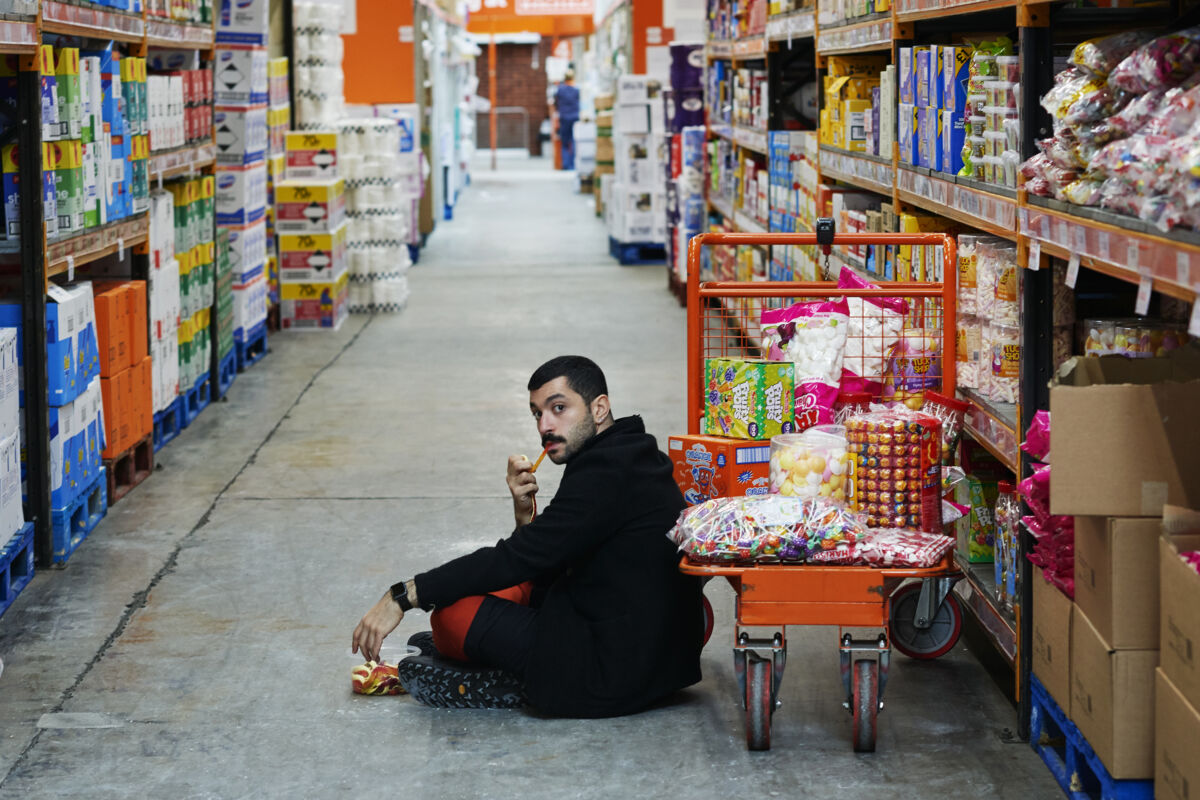In Middle Eastern art and performance the Earth strikes back with disease, indifference, therapy and smothering, oppressive greenery!
Malu Halasa
People are understandably nervous. The climate is in crisis. Animal viruses mutate, transition into humans and a pandemic infects the world, even as global temperatures rise. The continuing extinction of animal and insect species is surely a sign of hominid hubris.
These new fears are actually age-old ones. In the past, doomsday warnings were consigned to a nut with a sign on a street corner. Then they made newspaper headlines and the evening news. Now they’re ubiquitous, front and center on billboards, classrooms, the internet, social media and family WhatsApp messages. Older generations are sheepish for “living at the best of times” — sentiments that are accompanied by hand wringing for the young who will inherit their (our) mess. Researchers cited in The Lancet are concerned that it is youth who are perhaps most impacted. “Young individuals with depression and anxiety might be at a disproportionately increased risk for worsening symptoms in the face of changing climate,” they write.
Meanwhile, digital age theorist Doug Rushkoff speculated in the Guardian that even the tech billionaires of Silicon Valley have plans to sidestep impending doom by escaping into space or into well stocked, survivalist bunkers in New Zealand. The dream of virtual reality made a promise to the privileged that they wouldn’t have to step outdoors to breathe polluted air, swim in plastic-strewn seas or plough drought-stricken farmlands. These real time situations now threaten the globalized south and have been, in part, responsible for the thousands amassing at the Mexican-US or crossing the Mediterranean in small boats every summer.
Even those responsible for the latest technological innovations that are supposed to rival the industrial revolution in the sheer scale of change to come, have started to issue Cassandra-like warnings. Wily chatbots and their discoveries of new medicines may help us live forever on a desiccated planet, but we will be resented for doing so, and they are probably already plotting our demise or enslavement, like budding Terminators.
Many of the non-machines, the still-human, are justifiably angry at the Earth’s destruction and the truly energized have joined Extinction Rebellion or Just Stop Oil. Then there are thousands more, if not millions, frozen by inaction, mystified by what to do, wondering how to lower their anxiety levels and where to go if the end is nigh.
New performance and art from the Middle East may not offer the ultimate solutions. However, some of the immersive experiences, stories, soundscapes and points of view put forward by these artists are drawn from the experiences of coming from disturbing places. The range of artwork verges on the nightmarish, while others are unexpectedly cool, calm and collected before the storm. So much destruction to the planet won’t go unpunished. It isn’t a matter of time. It is happening now. In this art from the Middle East, Mother Earth is striking back.
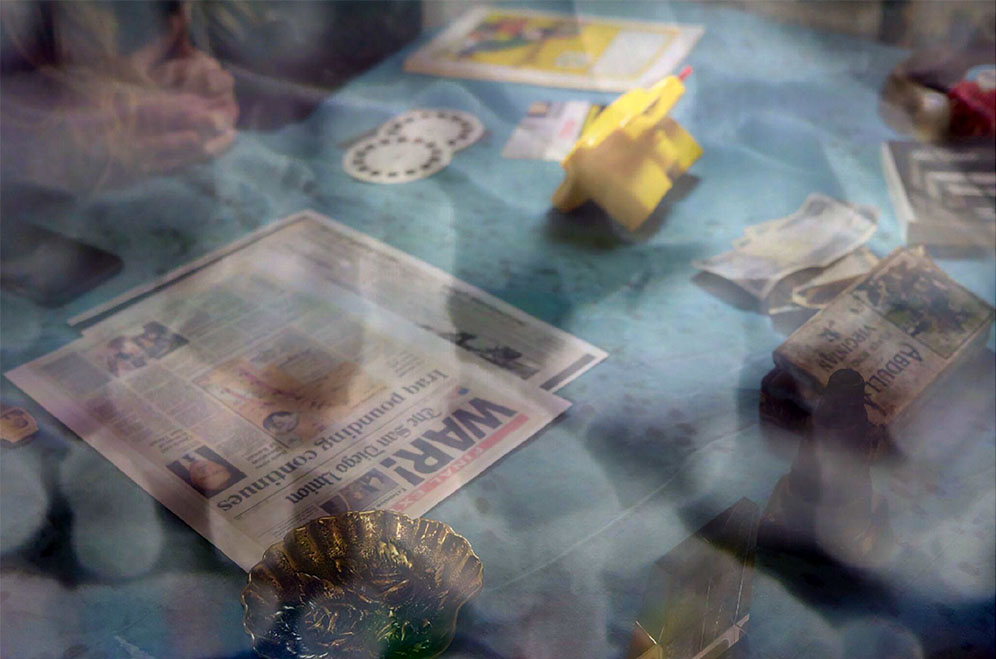
With Disease
Science fiction has provided an abundance of apocalyptic visions. Palestinian artist and filmmaker Yasmin Fedda draws on the hard-edged topics of some of her documentary films, such as the disappeared of the Syrian war, for an immersive theater show that makes its debut during London’s coming 2023 Shubbak — A Window on Contemporary Arab Cultures Festival. In Pathogen of War, the time is 2073 and a catastrophic “bio-rift” has already taken place. Bacteria resistant to antibiotics incubates in the killing fields of a Middle Eastern war that seemingly goes on forever, in Iraq. Acinetobacter baumannii, known in the US as “Iraqibacter,” ends up killing between 50,000-100,000 people a year. By the time the audience begins their intensive investigations under the expert guidance of Iraqi medical anthropologist Dr. Omar Dewachi, half the world’s population has already died.
With Indifference
Some artists use the latest digital technology not to feed fears, but to suggest greater truths that in many ways are also unpalatable for humans.
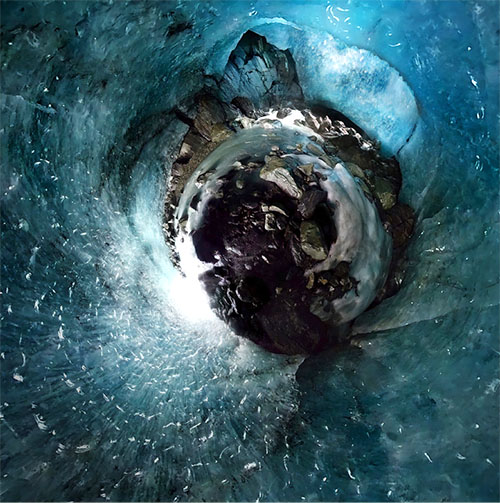
Dwelling in the Enfolding (2020) is an interactive and immersive 360° artwork by Mona Kasra and Matthew Burtner, which currently appears in the group exhibition Simurgh: Ten Women Artists from Iran at Galerie Crone, as part of Gallery Weekend Berlin, until June 16.
Dwelling’s starkly unpopulated panoramic VR landscapes of glacial mountains or iced caverns in the midst of snowmelt seemingly wrap themselves around the viewer. Remote self-renewing processes of nature have been intensified by Iranian-American new media artist Kasra and Alaskan-born composer and eco sound artist Burtner. However, beauty is not the purpose here. The artwork is as much a much a call to action — or at least self-analysis — as it is an invitation to aesthetic enjoyment.
For a peer-review exhibition of science and art, Our Earth, Our Home: Art, Technology and Critical Action, the artists explain their intentions: “Reimagining ourselves from consumers of the planet to its caretakers may perhaps be our biggest challenge as humans. Prompted by the anthropogenic devastation unfolding around us, our work draws upon insights by Heidegger and Ingold on the nature of dwelling to reimagine our entwined relationship to the Earth and how we coexist with it.”
Or to put it more bluntly, as Kasra does on her website: “The surrounding stillness … continues evolving in a perpetual act of dwelling devoid of human life … We don’t belong here. Neither our individual nor our collective memories and experiences are ascribed to the tapestry of the space. It thus resists our human comprehension.”
She belongs to a new breed of scientist-artists. Born in Tehran, she studied communications and graphic design at Graphic Design and Visual Communication from the Art University of Tehran before completing her graduate degrees, in digital visual art at California State University Northridge and Arts, Technology, and emerging communication at the University of Texas-Dallas. Presently she is an associate professor of digital media design at the University of Virginia. Her new project explores, in her words, “how motion capture, spatial audio, and interactive XR [extended reality] environments can represent and transmit embodied cultural practices.”
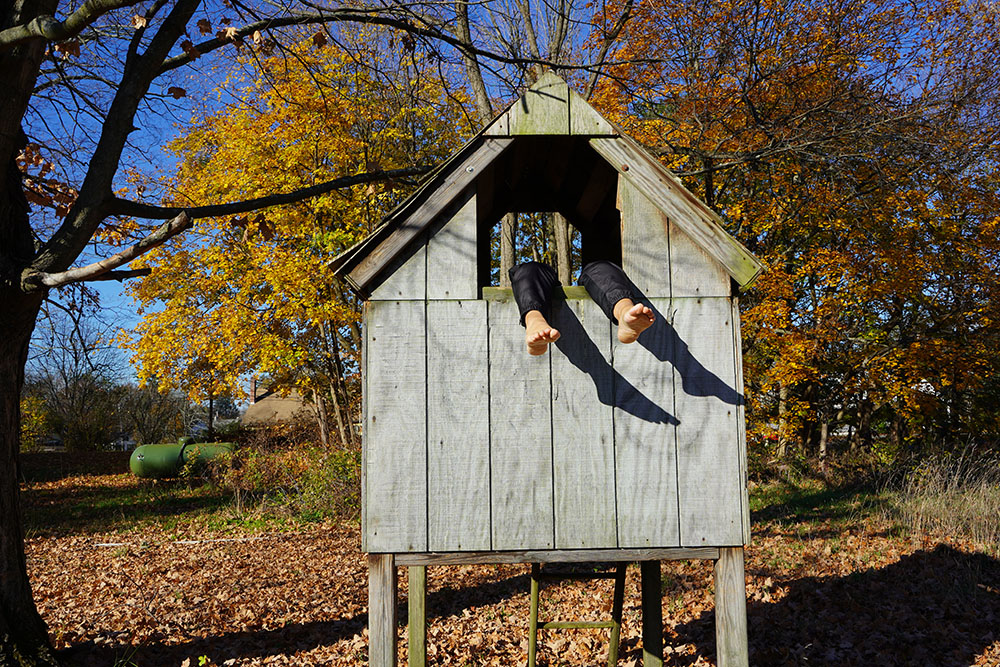
With Therapy
Other artists attempt to find solace and engender change by inviting audiences to experience nature within enclosed, intimate, safe spaces, in the hopes that different emotions will emerge towards oneself and other species. For the Lebanese “live artist” Tania El Khoury, “interactivity with audiences and its political potential” are key to her new interactive sound installation Memory of Birds, which premiered at the Fisher Center at Bard, in upstate New York.
Each individual audience member is given a card showing a particular bird — the Tufted Titmouse; Bluebird; Northern Cardinal; Red-winged Blackbird; Blue Jay; Black-capped Chickadee and Song Sparrow. These indicate which single-occupancy “tree house-pod” the audience member will inhabit as they listen to sound art on headphones.
On her website, Khoury describes Memory of Birds as “an interactive sound installation in trees in collaboration with a trauma therapist and migrating birds. The work explores political violence that literally and figuratively gets buried in contested lands.”
The piece, she goes on to write, is “designed to be forgotten,” with the promise that it “eats itself.” After audience members emerge bird-like from their tree house-pods, they are offered nuts, which they can, literally, feed to the birds. They’re also given za’atar, made by the artist’s mother, to be taken home.
Khoury is the director of the Open Society University Network’s Center for Human Rights and the Arts at Bard College, an associate member of the Forest Fringe collective of artists in the UK and a co-founder of Dictaphone Group in Lebanon. The latter is a research and live art collective, which aims to question peoples’ relationship to the city and public spaces. At Bard she has returned to pertinent questions of the wild.
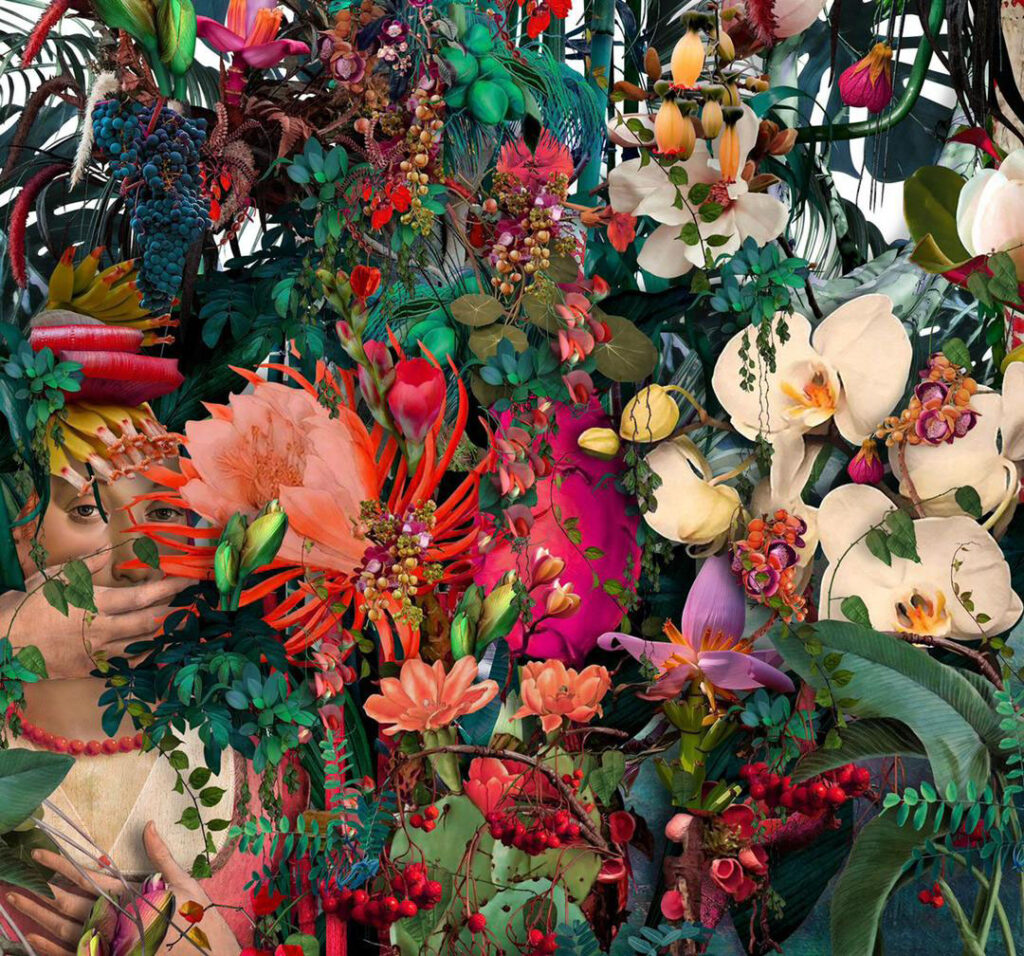
With Smothering, Oppressive Greenery
A reminder of our need for both greenery and protective camouflage comes not from a horticulturalist but a sculptor. Naeemeh Kazemi turned to painting during the Covid lockdown when she couldn’t go outside and walk to her studio in Tehran. From her one-bedroom apartment she painted the La La Land (2020–2021) series, lush, highly allegorical oil canvases, filled with enchantment, plants and flowers. But on closer inspection: something strange lurks in the bushes. A mysterious figure, seemingly a woman refugee from one of the Old Masters of art, stares out of the canvas. Dressed in ornate fifteenth century clothing, she appears with her hand or someone else’s over her mouth, obscured by the garish flowers and trees.
Art Basel provides the best description of Kazemi’s work: “[it] thrums with ecological and pandemic anxiety, invoked subtly through symbolism, references to classical painting, and a sense of being wholly suffocated by a too-bright, too-lush, tangled web of plant and animal life.”
This spring, Kazemi held a solo show in Leila Heller Gallery Dubai. In May, a painting from her La La Land series was included in the group exhibition, The Land of Honey, at Leila Heller New York. The show was curated by Emann Odufu, the filmmaker, art and culture critic and curator of Guyanese and Nigerian descent, from Newark, New Jersey. To quote from the exhibition notes, Kazemi’s painting like the other artwork in the exhibition uses abstraction to “pierce the veil of this dream state into territories that are less easy to discuss in today’s society.” In her particular case, it is anything the Iranian government finds objectionable which covers a lot.
This autumn she will have her first solo show in New York. In the paintings for that exhibition, the narrative of the mysterious woman continues. She slowly emerges from the jungle at different times, with dogs, a naked baby and fireflies.
So, what should one do as menacing doom casts a pall over the face of the Earth? Digital age theorist and cyberpunk Doug Rushkoff suggests that we begin spending much more of our lives away from the screen. Feel the wind on our faces and art in our hearts. Some immersive art and performance might be just one of many antidotes to the Killing Earth Blues.



